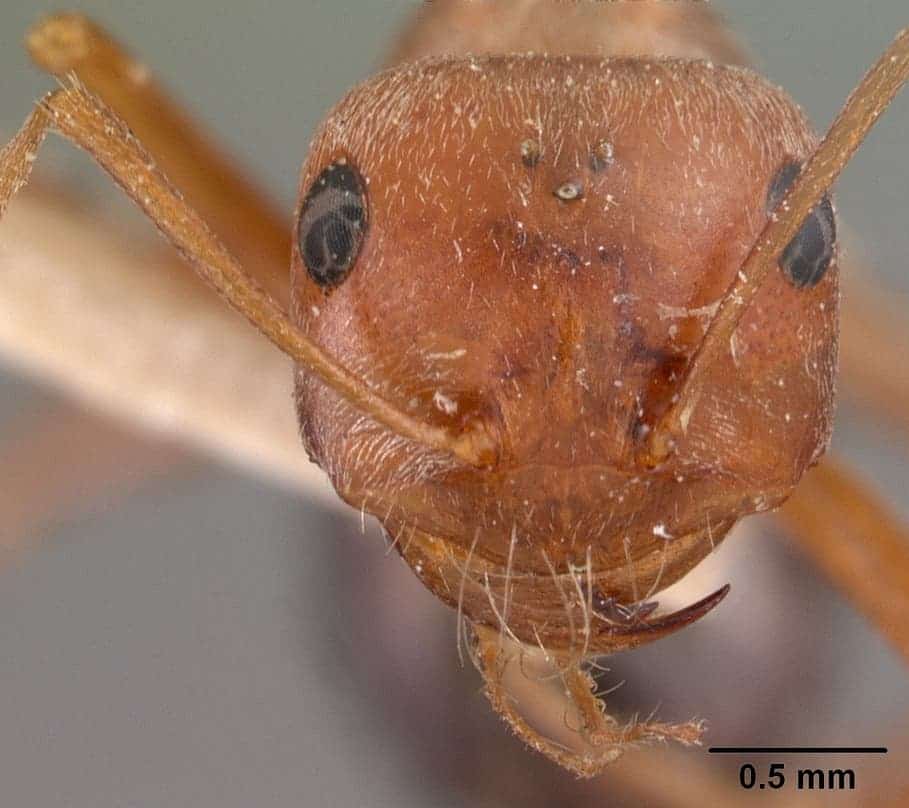The Saharan silver ant (Cataglyphis bombycina) is the fastest ant found so far, a new study reports — and, relative to its body size, one of the fastest animals out there.

Image credits www.AntWeb.org.
When measured in body lengths per second, this petite ant is, hands-down, one of the fastest animals we’ve found so far. At a speed of 855 millimetres (33.66 inches) per second, the Saharan silver ant moves roughly 108 times its body length per second. Cheetahs, for comparison, can only manage 16 body lengths per second, while Usain Bolt can only pull off 6.2. A human going at 108 body lengths per second would move at around 800 km (around 500 mi) per hour.
Small but fast
While birds do have a special place on the ‘fastest animals’ list, they also have the unfair advantage of being able to fly. If you only consider running speeds relative to body size, however, the ant is the third-fastest animal alive. First comes the Californian coastal mite (Paratarsotomus macropalpis) at 322 body lengths per second, and the a species of tiger beetle (Cicindela hudsoni) at 170 body lengths per second.
The ant’s incredible speed is an adaptation to its scorching home in the Sahara. While most animals there avoid going out during the day like the plague, the Saharan silver ant adapted to survive the burning sands. The ants have longer legs than their relatives to keep their bodies farther up from the sand and the heat it gives off. Their bodies also produce heat shock proteins before even leaving the nest, for maximum heat resistance. The ants are also able to track the Sun to help them navigate (so they spend as little time outside as possible), and are covered in hairs with a triangular cross-section that reflects and dissipates heat. Finally, they move really fast — also important when trying to get out of the sun.

Image credits www.AntWeb.org.
Put all of these features together and the ants are able to go out in the baking desert sun for a few minutes at a time, scavenging carcasses for food.
To find out exactly how fast the ants move, biologists from the University of Ulm in Germany decided to film them using a high-speed camera. They first located a nest in the desert and attached an aluminum channel to the entrance, with a feeder at the end, to lure out the ants. In addition, the team carefully excavated a nest and brought it back to Germany, to see how the ants moved in cooler temperatures.
“After the ants have found the food – they love mealworms – they shuttle back and forth in the channel and we mounted our camera to film them from the top,” said biologist Sarah Pfeffer, first author of the study.
The team reports that the ants operate at maximum efficiency in the desert, reaching speeds of up to 855 millimeters per second. In the cooler environment of the lab, they would leisurely stroll around at 57 millimeters (2.24 inches) per second. The secret to their speed is in the gait, the team reports. The Saharan silver ant can swing its legs at speeds up to 1,300 millimetres per second and extends its stride from 4.7mm to 20.8mm as it reaches higher speeds.
At full gallop, all six of the ant’s feet hit the ground at once, and only stay there for around 7 milliseconds. The team believes this helps the ant keep its tiny ant feet cool and prevents them from sinking in the sand.
The paper “High-speed locomotion in the Saharan silver ant, Cataglyphis bombycina” has been published in the Journal of Experimental Biology.


